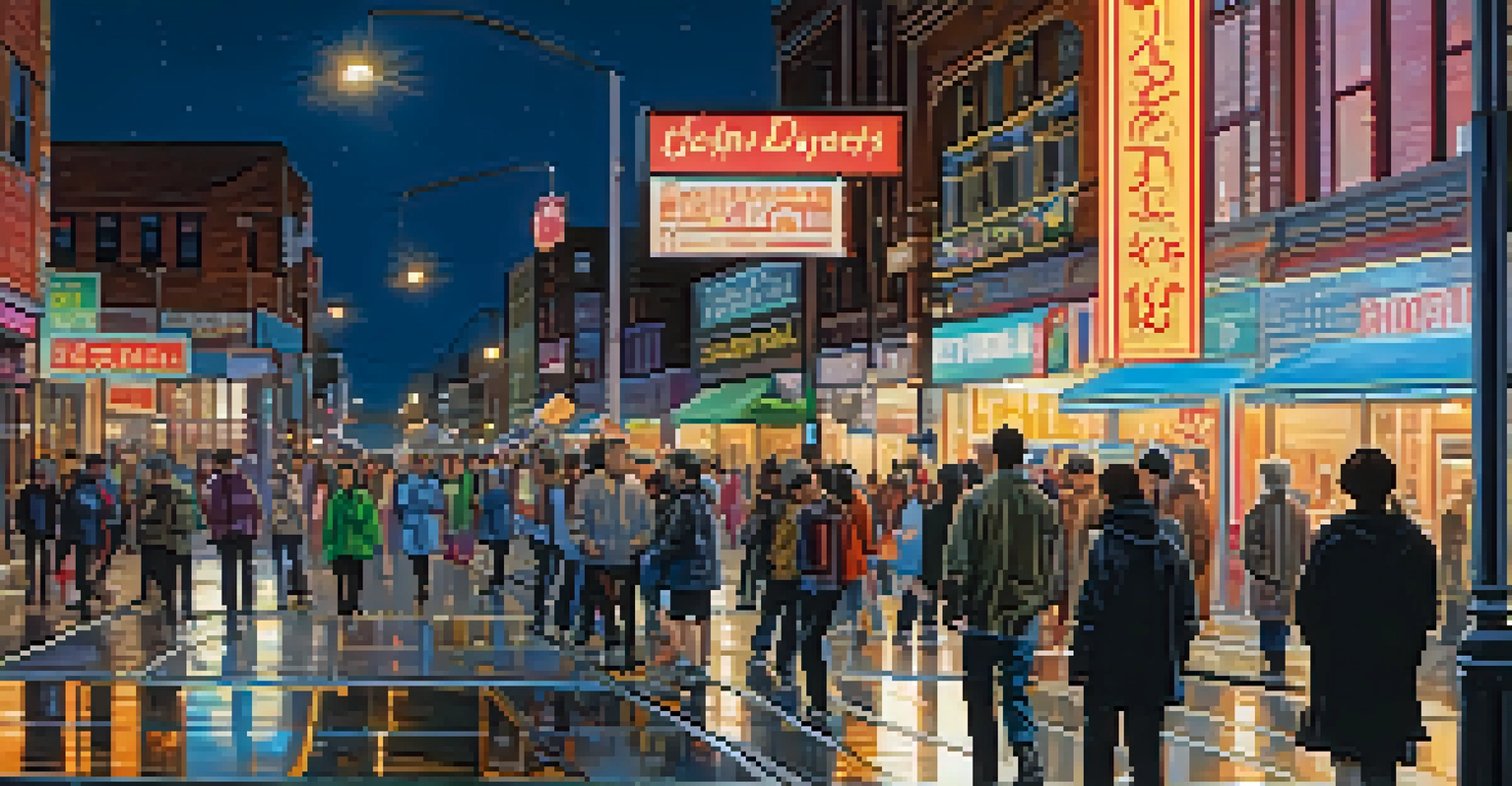The Role of Context: How Environment Shapes Art Emotion

Understanding Context in Art: What Does It Mean?
Context in art refers to the environment and circumstances surrounding the creation of a piece. This can include historical, cultural, and social factors that influence both the artist and the audience. For instance, a painting created during a war may evoke different emotions than one made in peacetime, highlighting how context can alter perception.
Art is the most beautiful of all lies.
When we talk about context, we’re not just discussing the physical space where art is displayed; we’re also considering the emotional and psychological states of both the artist and the viewer. This interplay can produce a rich tapestry of meanings, where each viewer might interpret the same piece differently based on their own experiences. This variability is what makes art so fascinating.
Related Resource
Ultimately, understanding the context helps us appreciate the layers of meaning in art. It encourages us to look deeper, making the viewer's experience more engaging and personal. By acknowledging context, we can better connect with the emotions that art seeks to convey.
Cultural Influences: Shaping Art's Emotional Landscape
Cultural context plays a significant role in how art is created and interpreted. Different cultures have unique traditions, values, and beliefs that influence artistic expression. For example, indigenous art often reflects a deep connection to nature and spirituality, evoking emotions tied to those cultural narratives.

Moreover, the emotional responses elicited by art can vary widely across cultures. What may be considered joyful in one culture might be seen as somber in another. This highlights the importance of understanding the cultural backdrop when analyzing art, as it shapes both the artist's intentions and the audience's reactions.
Context Shapes Artistic Interpretation
The context surrounding a piece of art—including cultural, historical, and physical elements—greatly influences how it is created and perceived.
Art becomes a dialogue between cultures, allowing us to explore diverse emotional experiences. By engaging with art from different cultural contexts, we not only broaden our understanding but also foster empathy and appreciation for varied human experiences.
Historical Context: The Backdrop of Artistic Expression
Historical events can dramatically influence the themes and emotions portrayed in art. For example, the turmoil of the Great Depression led artists to create works that reflected despair and resilience. This connection between historical context and artistic emotion showcases how external circumstances can shape creative output.
The painter tries to master the art of rendering the invisible visible.
Artists often respond to the world around them, using their work as a commentary on social issues, political strife, or cultural shifts. The emotions conveyed in their art can serve as a reflection of the time, encapsulating feelings that resonate with those who lived through those events. This makes art not just a personal expression but also a collective one.
Related Resource
By studying the historical context surrounding a piece of art, we gain insights into the emotions and motivations of the artist. This understanding can deepen our appreciation for the work and connect us to the broader narrative of human experience.
The Role of Physical Environment in Art Creation
The physical environment where art is created can greatly influence its emotional tone. An artist working in a serene, natural setting may produce pieces that evoke tranquility and peace, while a bustling urban environment might inspire energy and chaos. This relationship between space and creation is vital to understanding the emotional undercurrents of art.
Additionally, the choice of materials and mediums can also be affected by the environment. For instance, an artist using natural materials from their surroundings might create works that feel more connected to nature, fostering a sense of harmony. This choice amplifies the emotional impact of the art, tying it closely to its physical context.
Emotions Bridge Cultural Gaps
Art has the power to communicate universal emotions, allowing individuals from diverse backgrounds to connect through shared experiences.
In essence, the environment acts as a canvas itself, shaping not just the artwork but the emotions it conveys. By recognizing this, we can appreciate the depth of connection between an artist and their surroundings.
Audience Reactions: How Context Shapes Interpretation
The context in which art is viewed can greatly influence the audience's emotional reaction. For example, a piece displayed in a gallery might elicit different feelings than the same piece viewed in a public space. The setting can frame the viewer's experience, affecting how they connect with the artwork.
Moreover, personal experiences also play a crucial role in interpretation. A viewer’s background, beliefs, and emotions can color their understanding of a piece. Two individuals may walk away from the same artwork feeling entirely different emotions, showcasing the subjective nature of art appreciation.
Related Resource
This dynamic interaction between artwork and audience emphasizes the importance of context in shaping emotional responses. By considering how various environments affect our interpretation, we open ourselves to a richer, more nuanced experience of art.
The Emotional Power of Art: A Universal Language
Art has a unique ability to communicate emotions across cultural and linguistic barriers. Despite differences in context, certain themes—like love, loss, or joy—resonate universally. This emotional power allows art to connect people from diverse backgrounds, fostering a shared understanding of human experiences.
For instance, a piece depicting sorrow can evoke empathy in anyone who has experienced loss, regardless of their cultural background. This shared emotional language highlights the potential of art to bridge gaps and create connections among people, regardless of their context.
Audience Context Affects Perception
The environment in which art is viewed can significantly alter a viewer's emotional reaction, highlighting the subjective nature of art appreciation.
By recognizing the universal emotions in art, we can appreciate its role as a powerful tool for communication. It reminds us that, despite our differences, we all share the same fundamental feelings.
Conclusion: The Interplay of Context and Emotion in Art
In conclusion, the role of context in shaping art and its emotional impact is profound. From cultural and historical influences to the physical environment and audience reactions, every facet of context contributes to the rich tapestry of artistic expression. Understanding this interplay can enhance our appreciation for art and deepen our emotional connections to it.
Art is not created in a vacuum; it is a reflection of the world around us. By exploring the various contexts that inform artistic expression, we can uncover layers of meaning that enrich our experience. This exploration encourages us to engage with art more thoughtfully, recognizing the emotions it seeks to convey.

Ultimately, the relationship between context and emotion in art is an intricate dance, inviting us to participate in a dialogue that transcends boundaries. As we continue to explore and appreciate art, let us remain mindful of the contexts that shape our understanding and the emotions we experience.